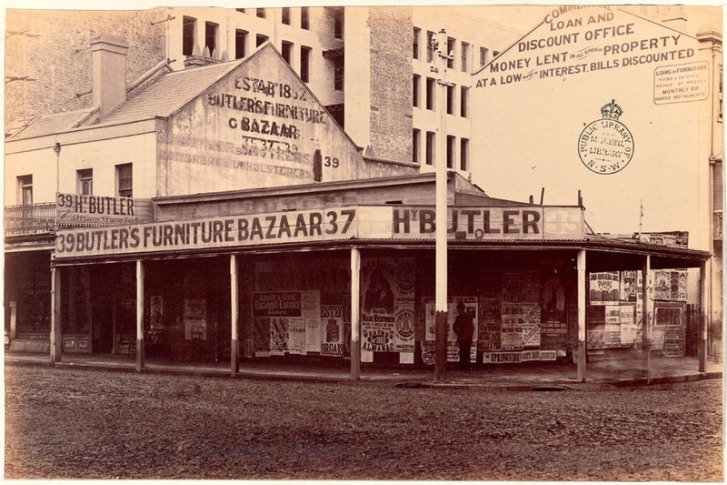Journalist Richard Twopeny rhapsodises about Sydney’s setting, while cursing what has grown up in it:
![S. Sedgfield, Sydney Harbour and its Vicinity: Middle Harbour from Clontarf heights. Lithographed and published by John Sands, Sydney (374 George Street) [188-?] (National Library of Australia)](https://sydneyanthology.files.wordpress.com/2015/02/sydney-harbour-1880s.jpg?w=491&h=313)
S. Sedgfield, Sydney Harbour and its Vicinity: Middle Harbour from Clontarf heights. Lithographed and published by John Sands, Sydney (374 George Street) [188-?] (National Library of Australia)
And it is as admirable from a practical as from an artistic point of view. The Austral and the Orient can be moved alongside natural wharves in the very heart of the city. There are coves sufficient to hold the combined fleets of the world, mercantile and naval. The outer harbour is the paradise of yachtsmen; the inner, of oarsmen. The gardens of suburban villas run down to the water’s edge along the headlands and points, and there are thousands of unoccupied building sites from which you can enjoy a view fit for the gods.

Butler’s Furniture Bazaar, 37-39 Park Street, cnr. Castlereagh Street, Sydney, c.1883 (State Library of NSW)
One feels quite angry with the town for being so unworthy of its site. Certainly, one of the greatest charms of the harbour must have been wanting when it was uninhabited, and the view of the city and suburbs as you come up into the port is as charming and picturesque, as that of Melbourne from Port Phillip is commonplace and repellent. But when you get near the wharf the charm vanishes. Never was there a more complete case of distance lending enchantment to the view. Not but that there are plenty of fine buildings, public and private; but the town is still much farther back in its chrysalis stage than Melbourne. Time alone can, and is rapidly making away with the old tumble-down buildings which spoil the appearance of their neighbours. But time cannot easily widen the streets of Sydney, nor rectify their crookedness. They were originally dug out by cart-ruts, whereas those of nearly every other town in Australia were mapped out long before they were inhabited. But if they were not so ill-kept, and the footpaths so wretchedly paved, I could forgive the narrowness and crookedness of the Sydney streets, on account of their homely appearance. They are undeniably old friends, such as you can meet in hundreds of towns in Europe. Their very unsuitableness for the practical wants of a large city becomes a pleasant contrast to the practical handsomeness of Melbourne and Adelaide…
The most unpleasant feature about Sydney is, that there is a thoroughly untidy look about the place. It is in a perennial state of déshabillé; whereas Melbourne nearly always has its dress-clothes on. In keeping with the wretched pavements, the muddy crossings, and the dust, are the clothes of the people you meet in the streets. Nobody seems to care much how they dress, and without being exactly countrified in their apparel, the Sydneyites succeed in looking pre-eminently dowdy.
–Richard Twopeny, English, 1857-1915
